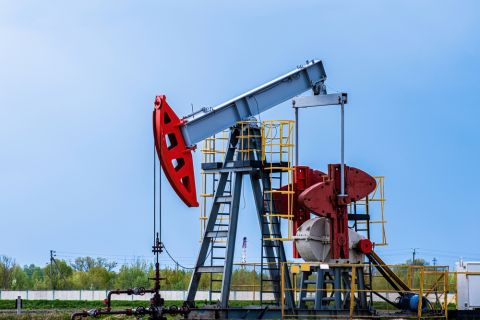
(Source: Shutterstock, HartEnergy.com)
Key Points
Dry gas production rebounded this week and averaged at 93.1 billion cubic feet per day (Bcf/d), a week-on-week increase of 0.20 Bcf/d or 1.4 Bcf. Demand from the power generation sector has increased by 1.73 Bcf/d to 38.6 bcf/d in the report week versus the prior report week. However demand from other major sectors appears to have declined by a combined 0.12 Bcf/d or 0.84 Bcf compared to the prior week. Furthermore, dry gas imports from Canada rose by 0.41 Bcf/d, while dry gas exports to Mexico declined from 5.48 Bcf/d to 5.45 Bcf/d for the report week. Our analysis leads us to expect an 83 Bcf storage build for the report week of Sept. 6. Our expectation is slightly above the current 81 Bcf consensus whisper expectation, and 10 Bcf higher than the five-year average of 73 Bcf.
After such a strong run-up in prices, it seems that higher imports and production will swamp weaker power and industrial demand growth and thereby rein in the gas bulls from days prior to this report. Potential gain in exports from several LNG trains undergoing startup may offset decreased power demand and may sustain Henry Hub prices to within 10 cents of current $2.60/MMBtu range.
Storage: Negative
We estimate a storage build of 83 Bcf will be reported by U.S. Energy Information Administration (EIA) this week for the week ended Sept. 06. Last week, EIA reported an 84 Bcf injection for the prior week. The build increased inventory levels to 2,941 Bcf, 383 Bcf higher than the year ago value but still 82 Bcf lower than the five-year average. This week we expect the build to be higher than five-year average. All in, we see storage changes as a negative driver for gas prices this week. We expect this week’s reported storage injection to be higher than the five-year average injection, due to higher supply. All in, storage dynamics offer a negative driver for the gas prices this week.
Weather: Neutral
The latest weekly temperature forecast from NOAA shows high temperatures continuing in the 80 to 90s for the Southern parts and edging upwards for the Eastern parts of the country. The high temperatures in the Southern and Eastern regions should lead to high natural gas demand. Temperatures in the 50s to 70s for the Upper Midwest, Northeast, and Rockies should lead to light natural gas demand for the respective regions. Week-to-date (Saturday through Tuesday), the Bloomberg data scrapes show significantly less gas demand in the power space this week vs. the same period last week. The positive power demand data for the report week is likely already included in the gas prices that have rallied substantially into the $2.60/MMBtu range. However, the negative data week to date suggests that weather at best will be a neutral driver for this week’s future price activity.
Supply: Negative
Supply levels recovered this report week to average 93.07 Bcf to post a 0.20 Bcf/d increase from the previous report week. We believe the drop in supply in the previous report week was due to offshore gulf producer uncertainty in the run-up to the landfall of Hurricane Dorian and additional tropical disturbance. All together, we see supply growth going forward as exerting negative pressure on prices this week.
Demand: Negative
From the residential and commercial sector, demand marginally dropped by 0.49 Bcf to around 8.23 Bcf/d. Industrial demand followed the same trend as residential and commercial demand while declining from 21.29 Bcf/d to 21.25 Bcf/d for the report week. We see a negative effect from structural demand side drivers for the report week.
Flows: Positive
Flows to LNG terminals show a week on week increase of 0.5 Bcf/d. We believe that the positive flows are as a result of the recent startup of Train 2 at Cheniere Energy, Ink’s Corpus Christi liquefaction facility and possibly the shipment of Freeport LNG’s first cargo from its recently commissioned Train 1 from its liquefaction facility located on Quintana Island in Freeport, Texas. Flows can be considered as positive this week.
Trader Sentiment: Neutral
The CFTC’s Sept. 6 commitment of traders report for NYMEX natural gas futures and options showed operators realized a net long decline this week which follows a net long decline last week meaning to us that they clearly seem to be even less optimistic this week. Financial speculators appeared to be even more bullish given their net long gain in the most recent week after a net long gain the prior week. Taken together, the longs represented the majority of the activity last report week. Looking ahead, we think the shorts may slowly but surely start coming back into the market after having gone long for a pretty strong bull ride. Overall, we think timing will be slow so trader sentiment will likely be neutral this week.
Recommended Reading
Analyst: Is Jerry Jones Making a Run to Take Comstock Private?
2024-09-20 - After buying more than 13.4 million Comstock shares in August, analysts wonder if Dallas Cowboys owner Jerry Jones might split the tackles and run downhill toward a go-private buyout of the Haynesville Shale gas producer.
BP Profit Falls On Weak Oil Prices, May Slow Share Buybacks
2024-10-30 - Despite a drop in profit due to weak oil prices, BP reported strong results from its U.S. shale segment and new momentum in the Gulf of Mexico.
Private Producers Find Dry Powder to Reload
2024-09-04 - An E&P consolidation trend took out many of the biggest private producers inside of two years, but banks, private equity and other lenders are ready to fund a new crop of self-starters in oil and gas.
Utica Oil E&P Infinity Natural Resources Latest to File for IPO
2024-10-05 - Utica Shale E&P Infinity Natural Resources has not yet set a price or disclosed the number of shares it intends to offer.
Comments
Add new comment
This conversation is moderated according to Hart Energy community rules. Please read the rules before joining the discussion. If you’re experiencing any technical problems, please contact our customer care team.






